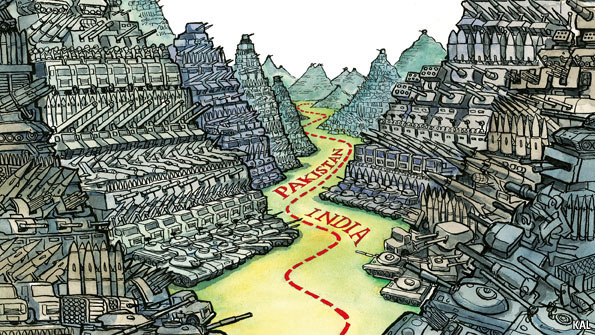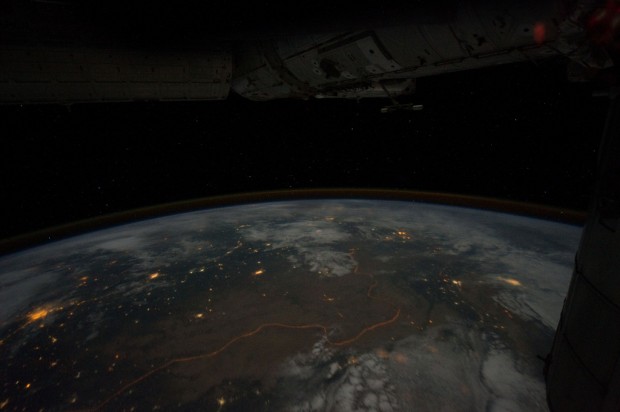An iconographic and text archive related to communication, technology and art.
☛ Fragile Oasis: “Border From Space” photographed from the International Space Station by NASA Astronaut Ron Garan on August 17, 2011 at 9:44pm GMT. (CC BY-NC 2.0)
Original captions from the Fragile Oasis website:
This picture depicts the illuminated man made border between India and Pakistan, seen from the north from onboard the International Space Station on August 17, 2011. To the left New Delhi, and the cities of Jaipur and Jodpur. At the right edge: Karachi in Pakistan. The most striking feature is something that is frequently thought not to be visible from space – a border.
The same photo is available on Fragile Oasis Flickr account (original size is 4256 x 2832).
Ron Garan is both a NASA astronaut (see his official NASA bio page) and the founder of Fragile Oasis. Here’s what he has to say about the website:
It is very difficult to look at our beautiful Earth from space without being moved in some way. One of the main goals of Fragile Oasis is to share this orbital perspective and inspire people to go out and make a difference; to go out and somehow make life better for those with whom they share this fragile oasis. The Fragile Oasis community was established to unite in the common goal of sharing our humanity and improving our world. Let us inspire, recognize, and help each other in our collective quest to make life better on our planet.
Ron Garan commented the photo he took in a very humanistic way. At one point, he remarks:
When we look down at the Earth, we are faced with a sobering contradiction. On the one hand we can clearly see the indescribable beauty of the planet we have been given. On the other hand is the unfortunate reality of life on our beautiful planet for a significant portion of its inhabitants.
In an interview he gave in 2005, Peter Sloterdijk made some enlightening comments about the fact that we share what separates us (my translation):
This is the fundamental factor of an ethic of foam. We cannot do whatever we want in our own bubble when we’re sharing the task of managing the complicated static of an ultra-artificial structure whose walls are the property of nobody; no one can claim exclusive ownership of walls in a foam-like structure. The neighbors are so close to each other that we cannot determine who is the owner of a given wall. We share the separator. This seems to be literally and metaphorically true when you think about the future of our coexistence: the challenge of managing the separator is the first emergency we face.
Here’s the original quote in French:
Voilà la donnée primordiale d’une éthique des écumes. On ne peut pas faire ce que l’on veut dans sa propre bulle lorsque l’on partage la tâche de gérer la statique très compliquée d’un édifice ultra-artificiel dont les parois ne sont la propriété de personne ; on ne peut pas être propriétaire de parois dans une écume. Les voisins se trouvent si proches les uns des autres qu’on ne peut plus déterminer qui est le propriétaire du mur. Nous partageons le séparateur. Cela semble littéralement et métaphoriquement vrai lorsque l’on pense la coexistence à venir : le défi de gérer le séparateur est la première urgence. (Mouvement.net: “Pensée Atmosphérique” Peter Sloterdijk interviewed by Léa Gauthier et Benoît Laudier, January 1st, 2005; subscription is required)
• • •
Complementary resources online:
- From The Economist see also “India and Pakistan. The world’s most dangerous border” May 19, 2011 and “Fantasy frontiers. Indian, Pakistani and Chinese border disputes” February 8, 2012.
- Édition de l’éclat: “L’archipel” by Massimo Cacciari, 1996. Translated from Italian to French by Michel Valensi. This short essay is about the paradox of the “european idea”: how to think a community of multiplicity.
See previous posts mentioning Peter Sloterdijk’s work.

- By Philippe Theophanidis
- on
- ― Published in Communication, Photography, Technology
- Tagged: astronaut, border, community, planet, relationship, séparation, Sloterdijk, space, together, walls

